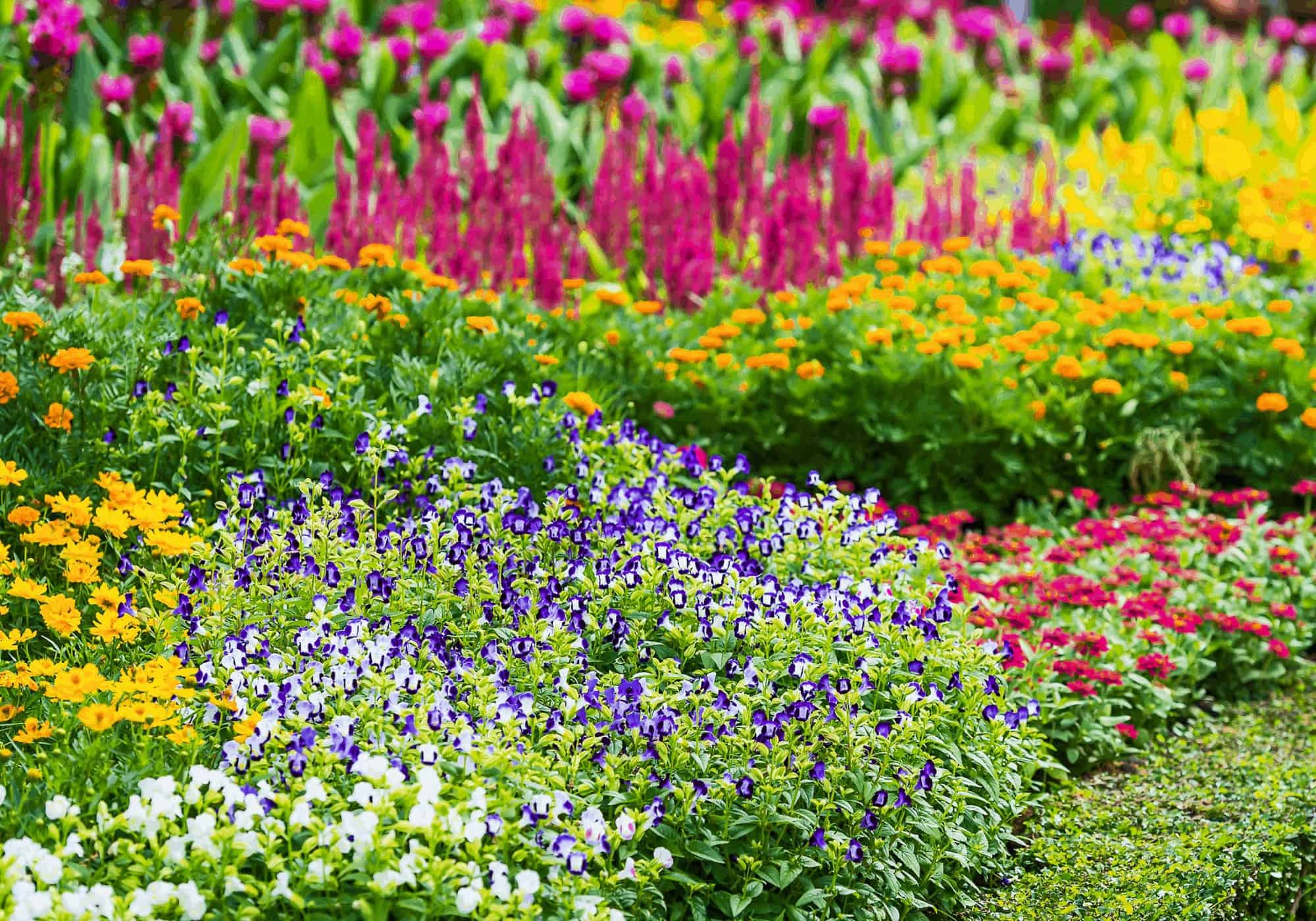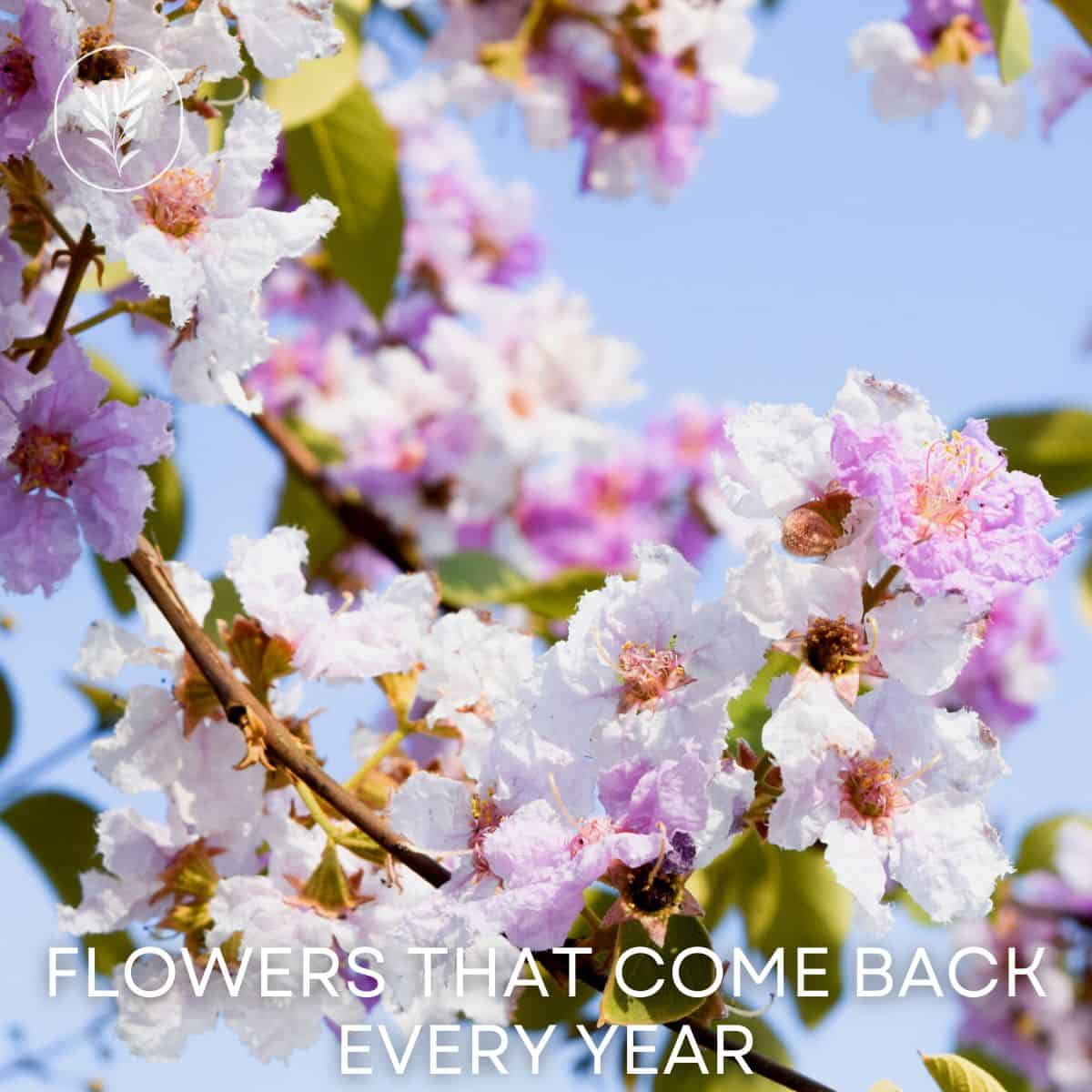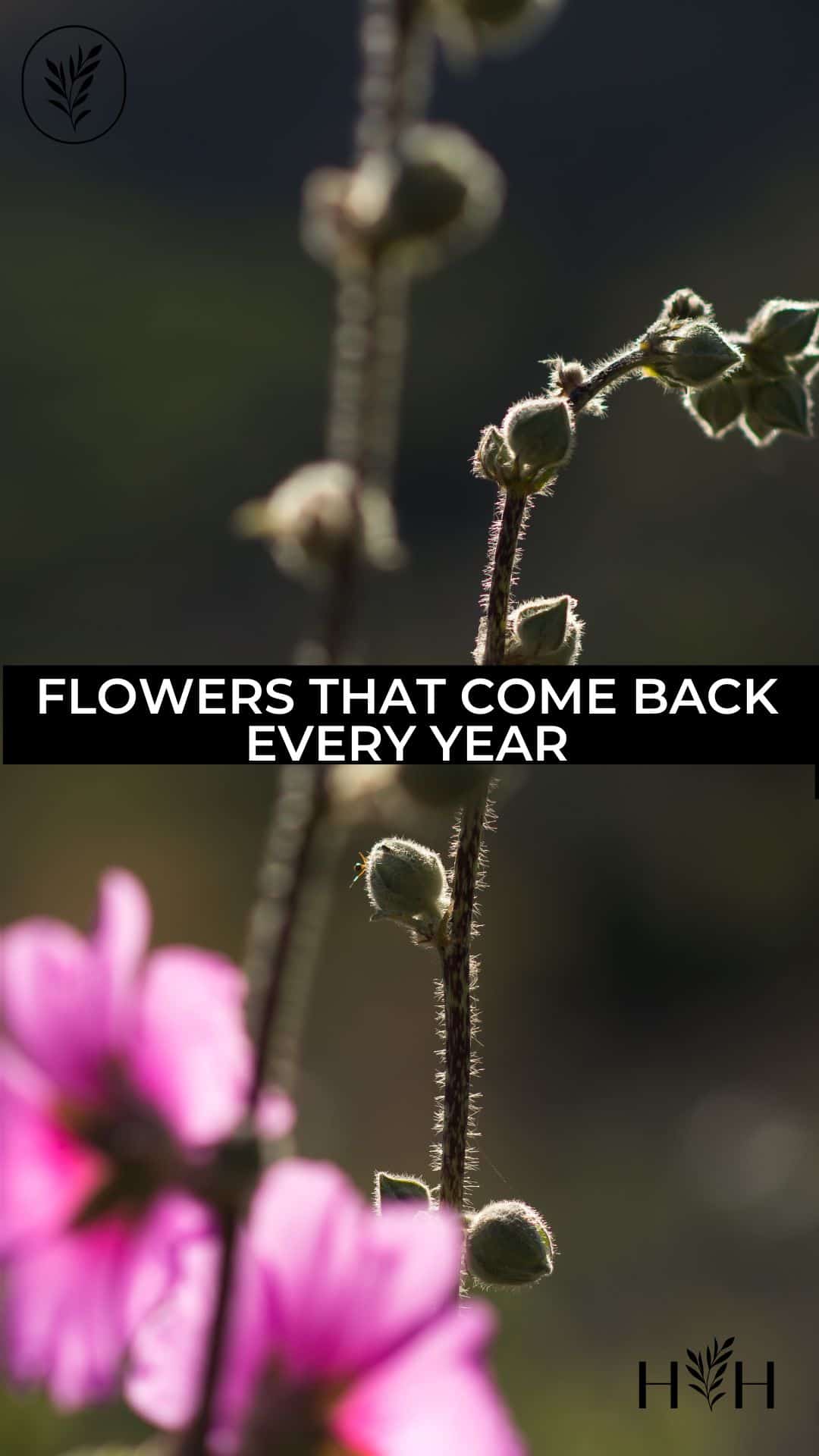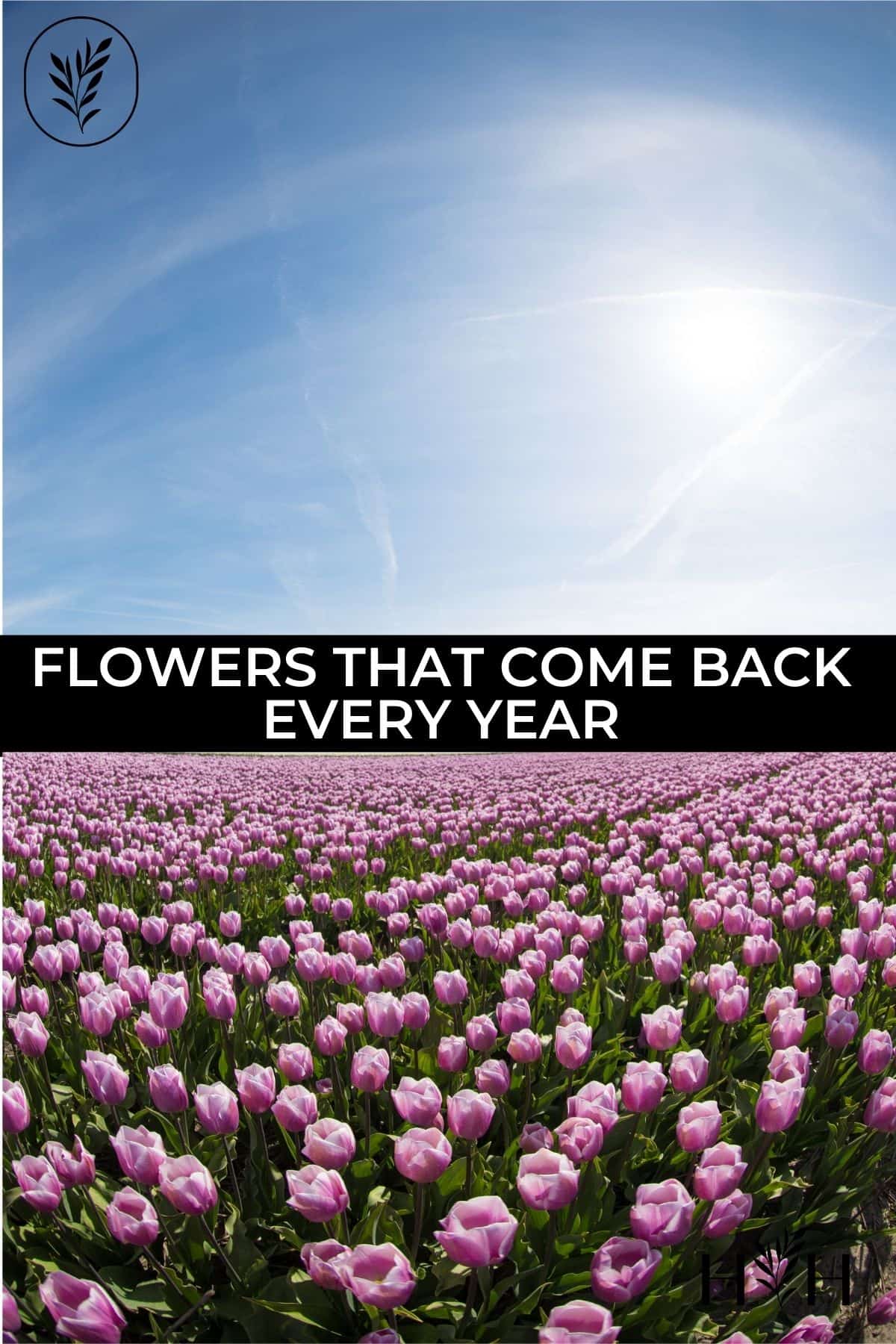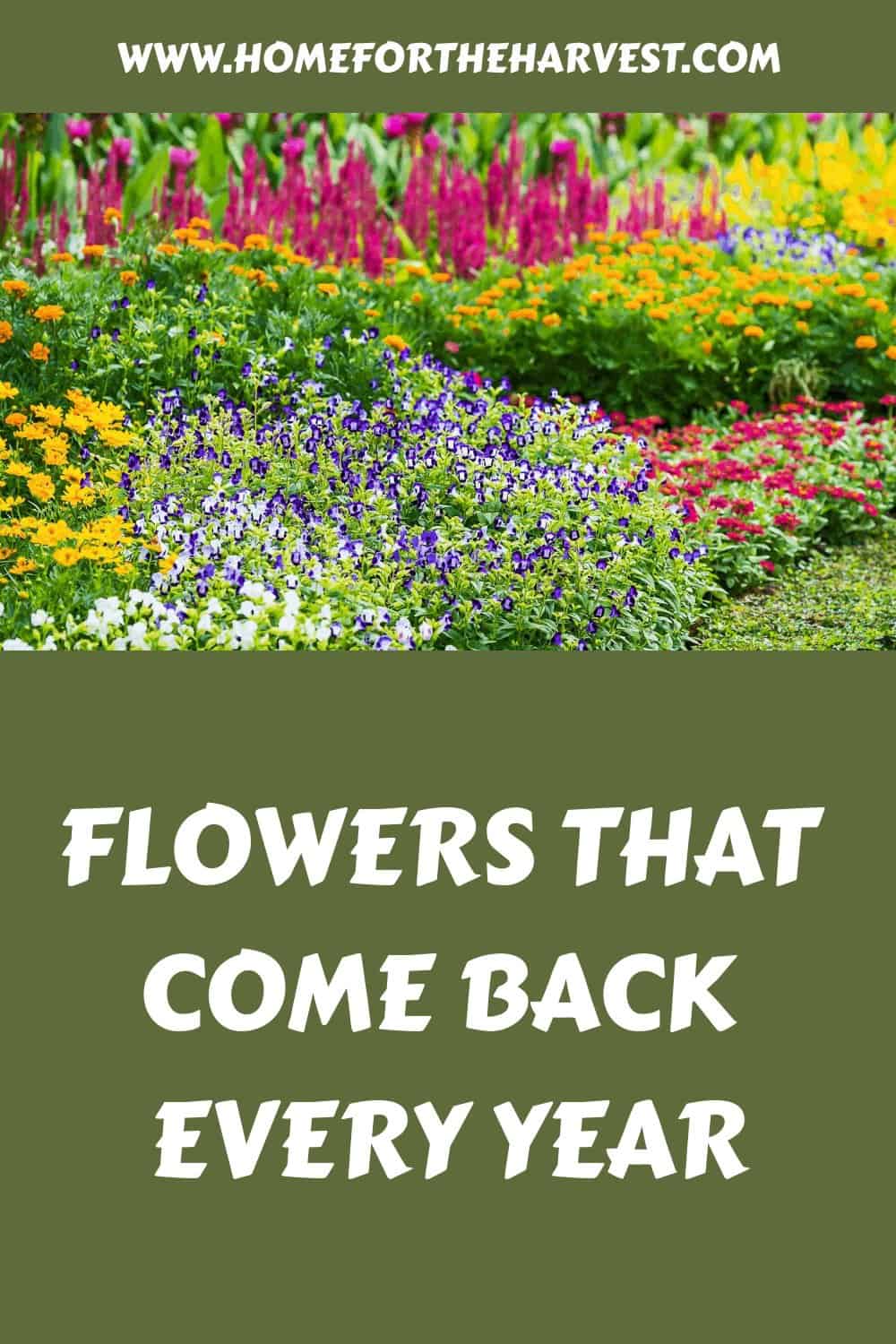Some of the best types of flowers are the ones that come back every year! If you are a flower gardener hoping to take advantage of everything that perennial flowers have to offer, here are some of the best choices. Whether you live in a warm climate or a cold one, there are beautiful perennial flowers to grow in every region.
Flowers that come back up from their roots every year in the springtime are called “perennial” flowers. Some of the best perennial flowers to grow in a garden are peonies, daylilies, coneflowers, and hollyhocks. The specific types of flowers that return each spring depends on your region. In general, you can count on perennials being durable and easy to care for no matter where you grow them.
Read on to learn which perennial flowers (the ones that come back every year) are the best to grow in the garden, plus tips on which are low-maintenance and details about how to plant these beautiful blooming plants.
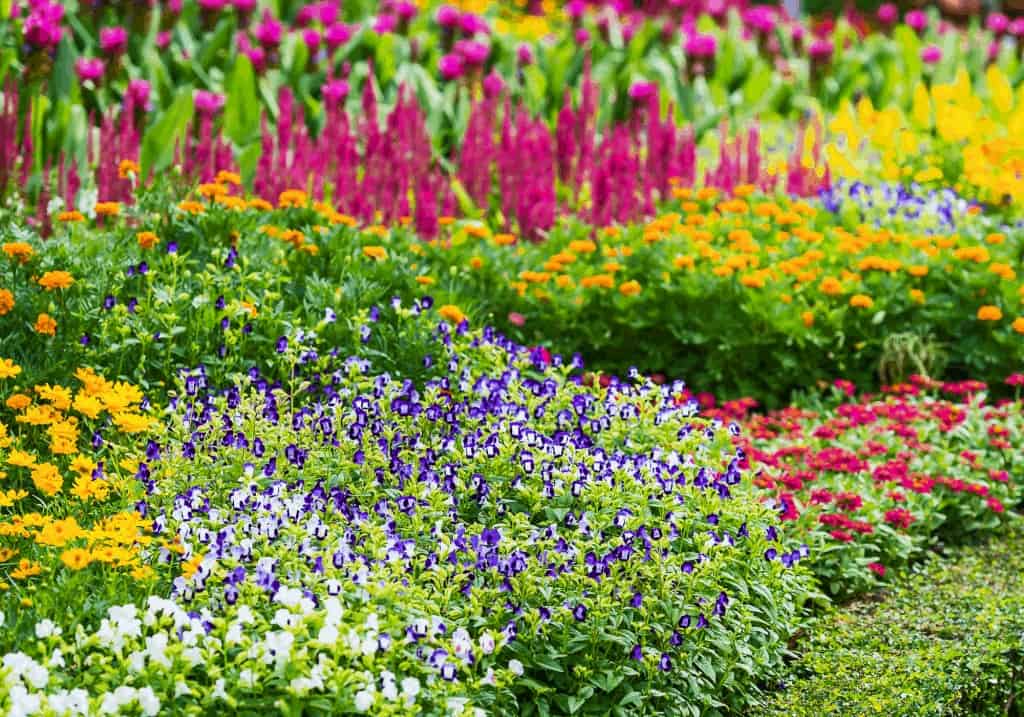
Perennial flowers vs. Annual flowers
Wondering what flowers come back every year? Any flower that comes back year after year is defined as a perennial flower. The word ‘perennial’ comes from the Latin prefix ‘per-‘ (meaning through) and the word annual (meaning yearly). Perennials are kinds of flowers that grow and bloom for multiple years. Unlike plants that are strictly ‘annual‘ (meaning that they live for one year and then die), the roots of perennial flowers survive through winter, allowing the plant to come back up in the spring.
Because of their durability, perennial plants are the favorite of gardeners around the world. They are generally survivors, and many of them have evolved to endure droughts and winter alike. Perennial plants return from their roots each year to grow fresh foliage and flowers, making them low-maintenance in the garden.
On the other hand, annual flowers are planted, grow, bloom, and seed all in the space of one year. Annuals live for only one growing season and need to be replaced every spring (although some do their best to spread their seeds during summer and fall before they die). Gardeners that grow annual flowers must plant new seeds yearly to ensure their garden continues. Furthermore, annual flowers each require different care and treatment in order to achieve their showy look, making the yearly planting of annual flowers rather time-consuming for some.
There are some types of annual flowers (such as the cosmos) that drop seeds on the ground for the following years. These “self-sowing” annual flowers will never be planted in the exact same spot twice, and the number of flowers that return in the following year is hard to predict. So, do annuals come back every year? While annuals do not come back every year, there are some that can grow each year from last year’s seeds (rather than growing back from the roots).
The durable nature of perennial flowers comes at a cost, however. Because flowering plants that come back every year put so much energy into improving the roots of the plant so that they can survive the winter, perennial plants generally bloom for shorter amounts of time and are less showy than annual plants. When considering what plants come back every year, many perennials are grown mainly for their foliage rather than their flowers (like hostas).
Many types of perennial flowers take a full year to grow and strengthen themselves, producing no flowers during this time. Annual plants also are less confined to specific regions. Because they grow for just one season, gardeners of annual plants don’t have to worry about how cold the winters are for a specific plant to survive. Furthermore, because annual flowers are replaced year after year, a gardener can customize their garden every summer or fall according to their preferences.
Apart from annual flowers, there is another class of flowers that competes with perennial flowers in some people’s gardens. These are called biennial flowers because their life cycle lasts two years. During the first year, they grow to be small plants. They do not bloom until their second year of life, so in order to keep a garden vibrant, a gardener will plant biennials every year to ensure that there are always some in bloom. Unfortunately, this means that biennial flowers still require more work than perennials though they offer a garden variety and beauty in exchange for the time investment.
That being said, it is hard to dislike perennial plants when looking at everything they offer to a garden. They need little care and will keep your garden looking lovely for years to come. Perennials have a lot of variety, with each plant offering something different to a garden. Here are a few of the best-returning flowers for your garden.
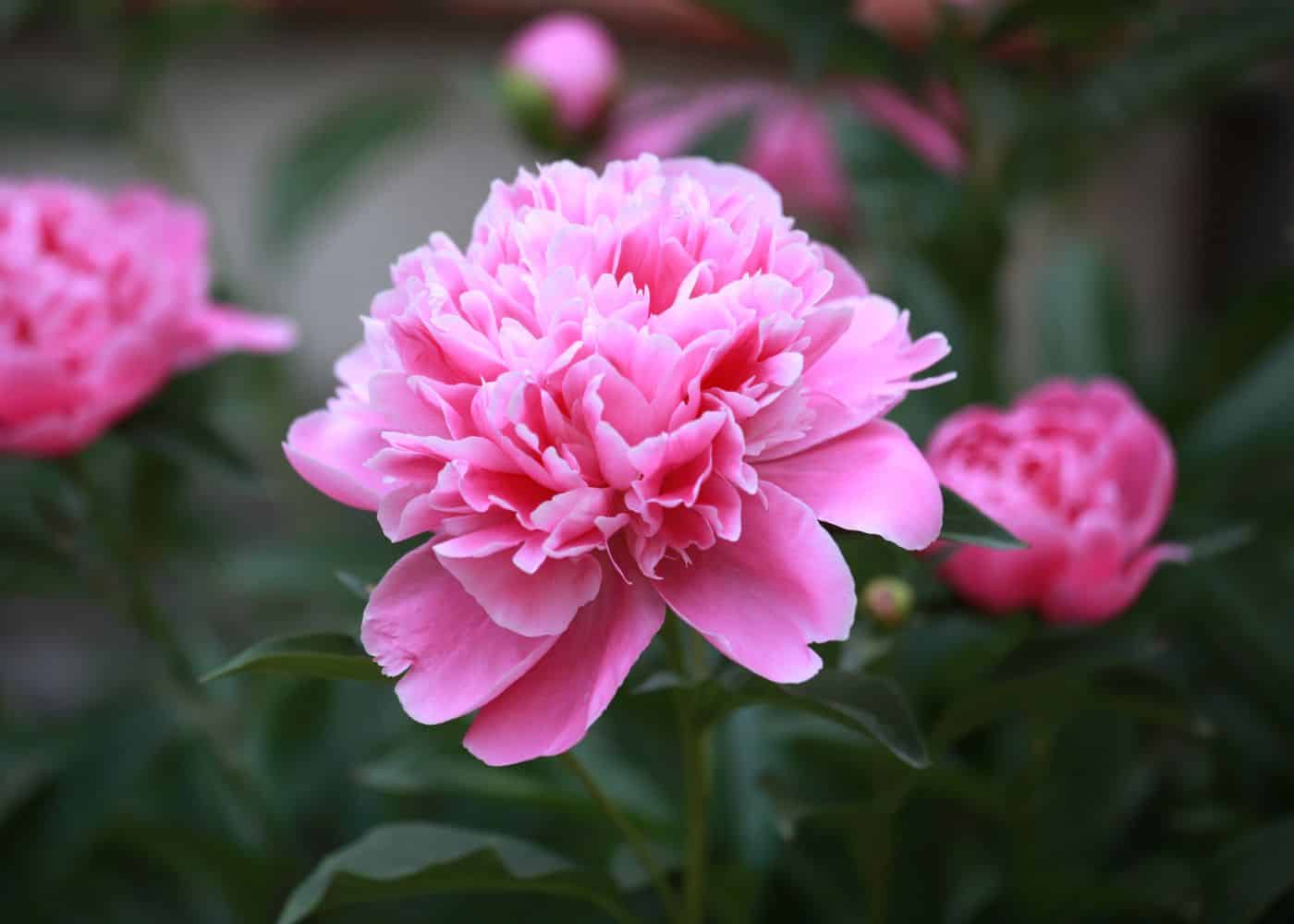
1. Peony (Paeonia)
Peonies don’t just come back every year – they come back every spring for decades. They are some of the most popular perennial flowers, and it is easy to see why. While the bloom season is short, it is spectacular. And you can plant different peony varieties with to stretch the season a bit.
Peonies are remarkably long-lived, lasting at least 20 years, with individual plants routinely surviving for 50+ years. They handle the cold very well and can survive winters as cold as -30 degrees Fahrenheit. They require relatively low maintenance levels, and their durability means that you can trust them to survive on their own.
To have a healthy crop of peonies every summer, the best thing you can do is pick a good spot to plant them in. Peonies are pretty flexible but they do not handle competition very well, so consider planting them away from trees or other large plants. Peonies are best planted in the fall and will bloom for the first time the following spring. That said, you can also plant peonies in the spring!

2. Daylily (Hemerocallis)
Daylilies are easily one of the most popular flowers for perennial gardens. They display brighter colors than most other perennial flowers and stay in bloom for several months (usually June to September). Daylilies are also fairly compact plants, making them able to fit into whichever plot you might want to have a little bit more color.
Because of their popularity, daylilies have been bred into a variety of forms and colors, with blossoms ranging from yellow and white to pink and purple. Their different types also offer a variety of forms, from trumpeted petals to recurved ones.
In caring for daylilies, there is relatively little that you need to do. The plants are not often eaten by animals, and they adapt to many different climates and environments. They can grow thickly along a path or a fence, denying any space for weeds to grow. Simply keep them watered and plant them in a place that has full sun and drainable soil.
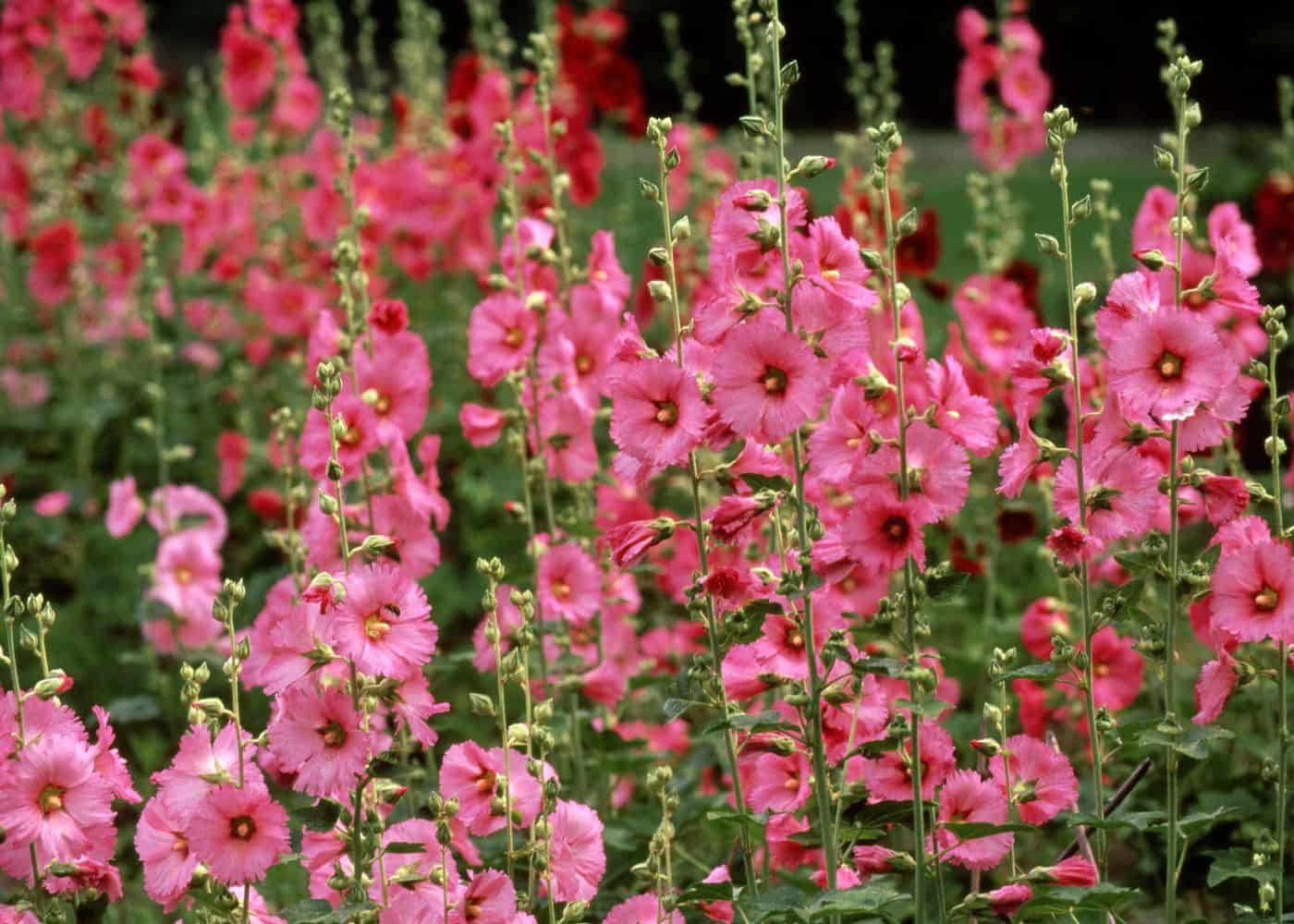
3. Hollyhock (Alcea)
Hollyhock is a short-lived perennial. The most notable feature of an established hollyhock is its height. Gardeners love these plants not only because of their durability but also because they add an extra dimension to their flower garden, raising the flowers that visitors see from several feet below eye level to flowers that reach over 2 meters in height.
The blossoms are all shades of red and pink, making the hollyhock an eye-catching plant, despite being low-maintenance.
One of the downsides of hollyhocks is that they are not as long-lived as some other perennial plants. Most hollyhocks live for about three years before dying. However, these plants are self-sowing flowers, so planting once will keep hollyhocks coming for many years after the first group has died. Blossoms appear in early June and usually last through August.
To get the most out of your hollyhocks, make sure that they are watered at the base of the plant. You can also protect your hollyhocks by treating them with a fungicide to keep them totally healthy. Overall, the eye-catching hollyhocks are one of the most popular perennial plants to add to a flower garden.
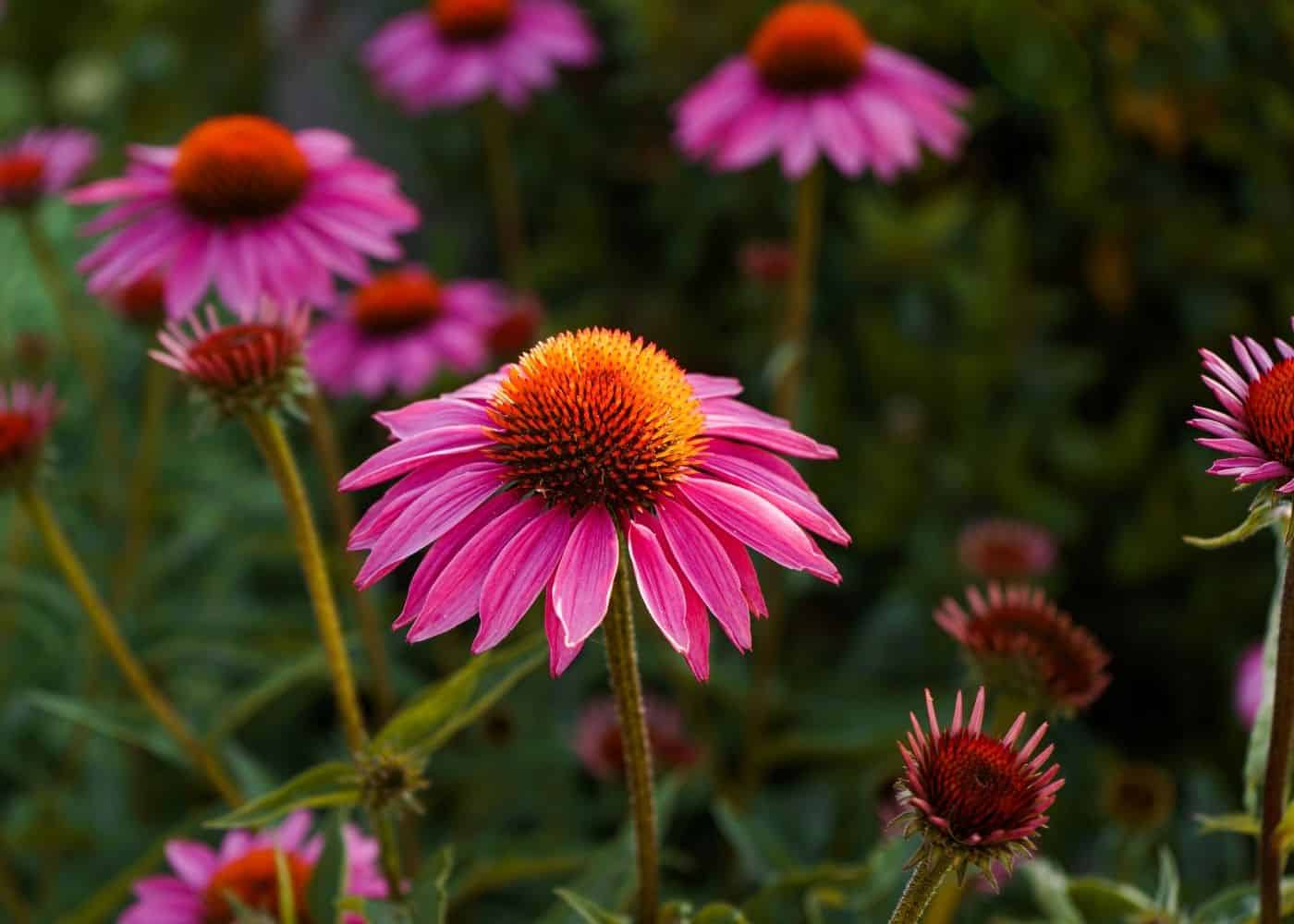
4. Coneflower (Echinacea)
Coneflower plants are a favorite of insects such as bumblebees and butterflies. They have also been known to attract songbirds and hummingbirds, all of which love the nectar from this plant. For these reasons (and because of the relatively easy time that gardeners have with them) coneflowers are found in gardens everywhere.
They can come in shades of white and yellow but are most commonly seen in shades of pink/purple. They grow about two feet off the ground and are generally found in large groups because they spread their seeds quickly and effectively.
Coneflowers have the advantage of being very resistant to heat and drought and at times will dominate some fields because of their fast spread. They handle different types of soil well but will compete with other flowers in the same plot. Another downside of cultivating coneflowers is that they sometimes take a few years before they reach their full blossom, so they can be an investment for gardeners. However, once they have grown they will live for as long as 20 years, making them a wonderful, long-lasting perennial.

5. Columbine (Aquilegia)
Columbine is another classic perennial for a cottage garden. One of the advantages of the columbine flower is that not only does it last from year to year but the columbine’s appearance changes throughout the year.
Another great benefit of this flow is the fact that your columbines will attract hummingbirds, adding more life and color to your flower garden. They grow quickly and live for about four years.
Overall, columbines are a hardy plant that requires little maintenance. One of the downsides of the plant is that it is in full bloom for a relatively short amount of time during the spring. However, even when the flowers are not in bloom, the plant is an attractive garden feature with its leaves and coloring. The plant is tolerant of drought and can adapt to many different types of soil.
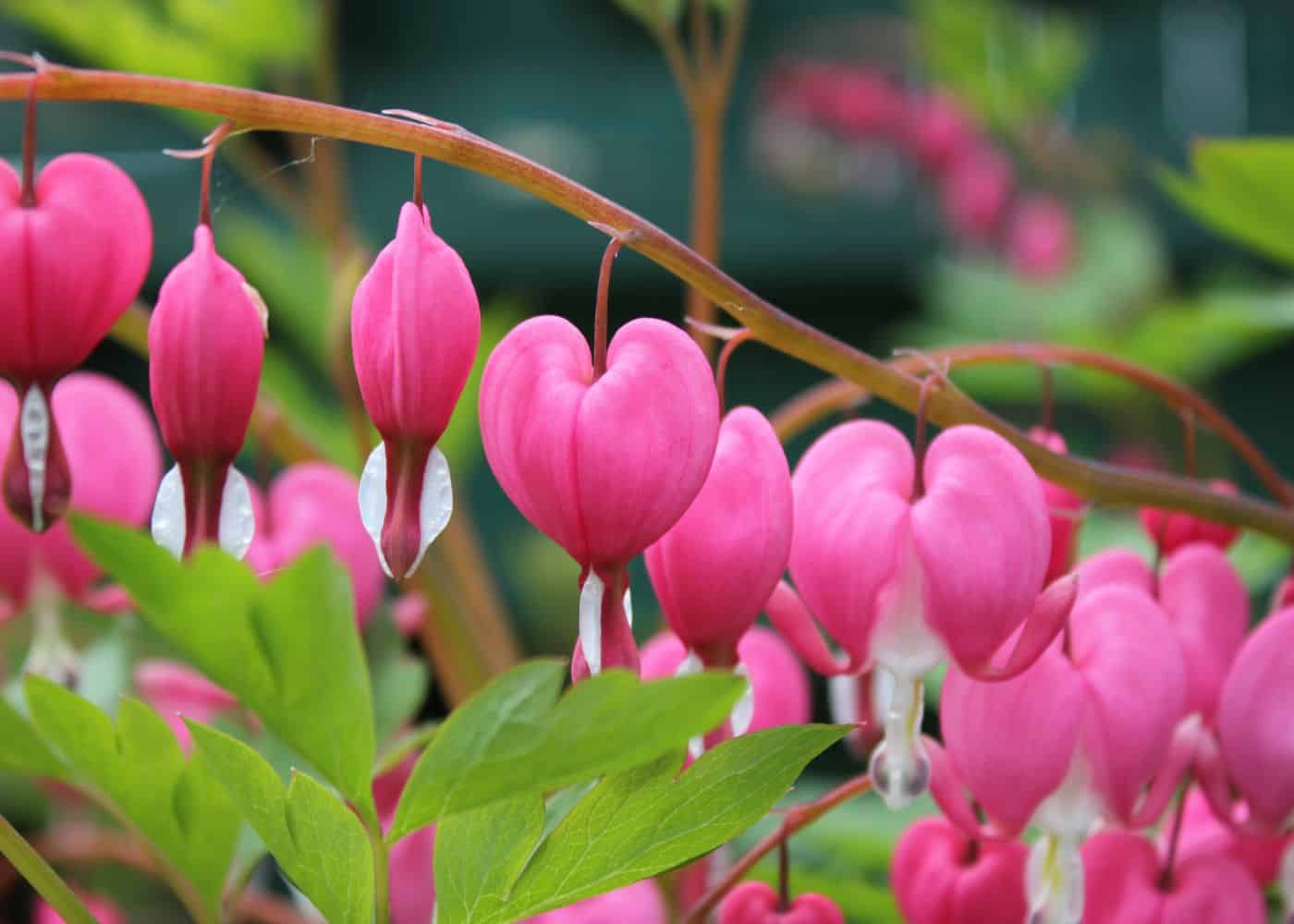
6. Bleeding heart (Dicentra)
Another one of the most popular perennials for a garden is the bleeding heart. These plants are popular because of the distinct shape of the petals, which hang from the flower stalks and look like hearts.
They can last anywhere from 5 to 7 years or even longer. The dark green coloring of the plant combined with the pink petals and the hanging leaves makes the bleeding heart contribute to a forest look, which could be perfect for the type of garden that you are working towards.
Overall, caring for a bleeding heart does not take that much work. Just be sure to protect the plants from getting too hot or from getting too much sun. As long as it doesn’t have a summer that’s too rough, it will be well prepared to lie dormant during the winter to bloom again in the spring. Bleeding hearts will also reseed themselves, so once you find the right spot for them, you can mostly leave them alone, apart from watering.
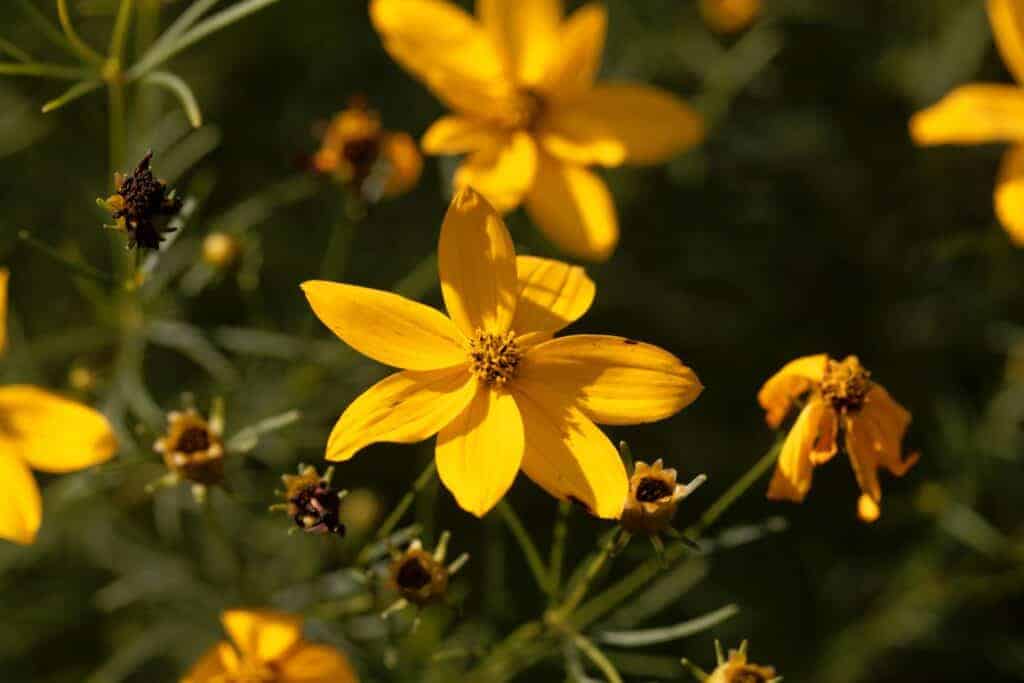
7. Tickseed (Coreopsis)
Tickseed is another popular perennial flower grown partly because of its tolerance of different soil types and its long blooms. The flower first blooms in early summer and stays put through the fall, making coreopsis a great complement to spring-summer flowers.
As with most other favorite perennials, tickseed is remarkably easy to grow as they tolerate just about any condition. If they have full sun and get water, they can survive droughts and resist pests. Because of their durability and bright summer colors, they will make your garden shine.


